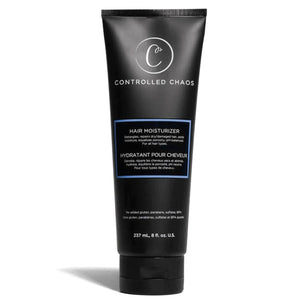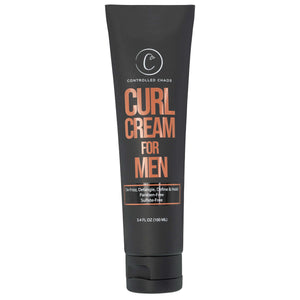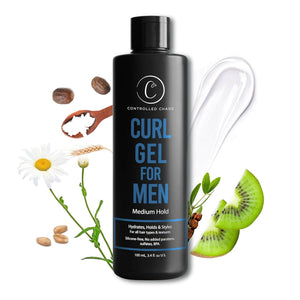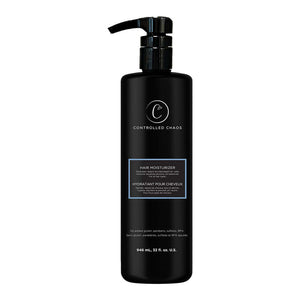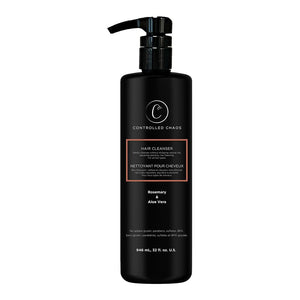

Dry hair can be challenging to manage, often leading to frizz and a lackluster appearance. A leave-in conditioner on dry hair is essential to combat these issues. This blog will discuss why leave-in conditioner is the best approach to maintaining beautiful, healthy hair and how to apply it to dry hair.
Understanding the Benefits of Leave-in Conditioners
Unlike regular conditioners, which are rinsed out after a few minutes, leave-in conditioners remain in your hair, offering prolonged benefits such as:
- Moisture Retention: Dry hair lacks moisture, making it brittle and prone to damage. Leave-in conditioners are designed to lock in moisture, preventing dryness and keeping your hair hydrated.
- Frizz Control: Humidity and dryness can lead to frizz, making your hair difficult to manage. Leave-in conditioners help smooth the hair cuticle, reducing frizz and promoting a sleeker appearance.
- Detangling: Dry hair often becomes tangled, especially after washing. Leave-in conditioners make detangling more accessible, reducing breakage and making your hair more manageable.
How Should Leave-In Conditioner Be Applied to Dry Hair?
To get the most out of your leave-in conditioner, it’s essential to apply it correctly. Here’s a step-by-step guide to ensure dry hair leave-in conditioner benefits:
- Start with Clean Hair: Shampoo your hair gently and rinse well. For the best results, apply leave-in conditioner to clean damp hair.
- Use the Right Amount: Use a small amount of leave-in conditioner depending on your hair's length and thickness. Too much product may weigh down your hair, while too little may not provide enough hydration.
- Focus on the Ends: The ends of your hair are the driest and most prone to damage. Concentrate the leave-in conditioner on the ends and work your way up, avoiding the roots to prevent greasiness.
- Let It Absorb: Let the leave-in conditioner absorb into your hair before styling. You can use a blow dryer or let your locks air dry.
The Best Time to Use Leave-in Conditioner
Leave-in conditioner for dry hair moisturizing are versatile and can be used at different times depending on your hair’s needs:
- Post-Wash: The most common time to apply leave-in conditioner is after washing your hair. This helps seal in moisture and protect your hair as it dries.
- Daily Hydration: If your hair feels dry or lacks shine during the day, apply a small amount of leave-in conditioner to dry hair for a quick moisture boost.
- Before Styling: Use a leave-in conditioner as a heat protectant before styling your hair with heat tools. It provides a barrier that minimizes damage from high temperatures.
Advanced Tips for Using Leave-in Conditioner on Dry Hair
Creating a Customized Routine
Personalizing your leave-in conditioner routine canC further enhance its benefits:
- Layering Products: For extra moisture and protection, you can layer a leave-in conditioner with other hair products, such as serums or oils. Apply the leave-in conditioner first, followed by additional products if needed.
- Adjusting Application Frequency: Depending on your hair’s condition and environment, you may need to change how often you use leave-in conditioner. More frequent application might be necessary in arid climates or during winter.
- Combining with Other Treatments: Integrate leave-in conditioner with other treatments, this combined approach can address multiple aspects of hair health simultaneously.
Troubleshooting Common Issues
Even with regular use, you might need some help with some issues. Here’s how to handle them:
- Build-Up: If you notice a build-up or a weighed-down feeling, ensure you’re using the right amount and consider clarifying your hair periodically to remove any residue.
- Greasy Appearance: Applying too much leave-in conditioner or using it too close to the roots can make your hair appear greasy. Use a smaller amount and focus on the ends.
- Inconsistent Results: Review your overall hair care routine if you’re not seeing consistent results. Ensure you address other factors such as diet, hydration, and general hair health.
Long-Term Benefits and Maintenance
Maintaining the health of dry hair requires a consistent approach. Using leave-in conditioner effectively can yield long-term benefits if integrated into a comprehensive hair care routine:
Adapting to Seasonal Changes
Different seasons can impact the condition of your hair. Adjusting your leave-in conditioner routine according to seasonal changes can enhance its effectiveness:
- Winter Care: Cold weather and indoor heating can strip moisture from your hair. Use a leave-in conditioner with added moisturizing ingredients during winter, and consider using a heavier formula for extra protection.
- Summer Protection: Sun exposure and swimming can cause dryness and damage to hair. To safeguard your hair from environmental stressors, opt for a leave-in conditioner with UV protection and hydrating properties.
- Humidity Management: High humidity can lead to frizz and moisture overload. Use a leave-in conditioner to control frizz and maintain hair balance, ensuring your hair stays smooth and manageable.
Evaluating Product Performance
Regularly assess how well your leave-in conditioner is working for your hair. Look for signs of improvement, such as reduced frizz, increased shine, and enhanced manageability. If you notice any changes in your hair’s condition or the product seems less effective over time, experimenting with different formulations or adjusting your application method might be worth experimenting with other formulations.
Conclusion
Leave in conditioner on dry hair is a versatile and invaluable tool for maintaining healthy, hydrated hair. You can achieve and maintain beautiful hair year-round by understanding how to use it effectively. Also, choosing the right product and integrating it into a holistic hair care routine is good. Consistency and a balanced approach to hair care will help you keep your hair looking great and feeling its best.
FAQS
Is it okay to put leave-in conditioner on dry hair?
You can apply leave-in conditioner to dry hair for added moisture and manageability. It helps tame frizz and refreshes hair throughout the day, though it's typically more effective on damp hair.
Can you put conditioner on dry hair and leave it overnight?
While it’s uncommon, applying conditioner to dry hair and leaving it overnight can provide intense hydration. Just be cautious with the amount used to avoid build-up or greasy residue.
Who should not use a leave-in conditioner?
Those with fine or oily hair may want to avoid leave-in conditioners, as they can weigh hair down or contribute to excess oiliness. Conditioners are best for dry, curly, or damaged hair.
Is it healthy to put conditioner on dry hair?
While conditioner can provide additional moisture and improve manageability, it’s generally more effective when applied to damp hair to better penetrate and hydrate the strands.
Can I apply leave-in conditioner to dry hair?
Yes, it's fine to do so. It can help control moisture and frizz and is a valuable option for refreshing hair between washes.
Is it better to put leave-in conditioner on dry or wet hair?
Leave-in conditioner is most effective when applied to damp hair, as it helps lock in moisture and distribute the product evenly. Applying it to dry hair can still be beneficial but may be less effective.
How to properly apply leave-in conditioner?
Apply leave-in conditioner to clean damp hair, focusing on the ends. Use a small amount, distribute evenly with your fingers or a wide-tooth comb, and avoid the roots to prevent greasiness.
How long do you leave the conditioner on dry hair?
If conditioner is used on dry hair, leave it in for 15-30 minutes before rinsing. For leave-in conditioners, apply as directed without rinsing, allowing it to work throughout the day.


